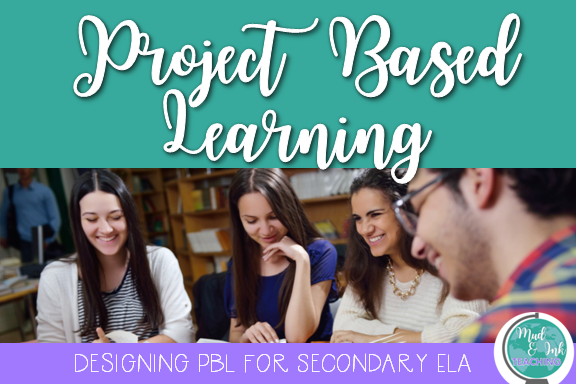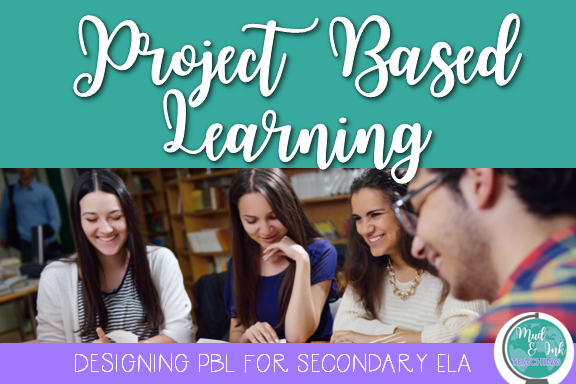Project Based Learning in the Secondary ELA Classroom
When teachers hear the term PBL (Project/Problem Based Learning), too many envision a science or math classroom. STEM focused courses are not the only courses where PBL is both important AND successful. Taking real world, authentic problems and putting them in the hands of students to investigate and solve belongs in EVERY discipline! Today, we'll take a look at how PBL can take shape in the English Language Arts classroom.
Project Based Learning: It All Starts with a Question
What makes PBL and ELA such a seamless fit is in one core principal: they're both inquiry driven. In our ELA classes, we're always asking students to ask questions and to dig to find the answers. The same notion goes for PBL. Once you find a place in your curriculum that you want student questions to drive the learning, you've found a place for a PBL assignment or unit.
Here are a few ideas to get started...
Fiction PBL
This type of project is fun, but there's not too many other teachers out there on the internet writing about it, so you'll have to bear with my example here as I don't have others to show you. When we think of a Fiction PBL, we are thinking about teaching a specific novel and making the problem in the novel something for students to extract and solve in real-life. So, for example, if you teach The Hunger Games, one of the core problems in the novel is the way the government creates and produces propaganda through media channels to maintain it's power and keep their citizens afraid and only informed with "approved" messages. To create something PBL, you would need to find the real-world connection. Immediately, I think about some of the Trump-era restrictions on media, the banning of certain media outlets during the campaign, and the circling accusations of "fake news". Here is an opportunity for a teacher to ask a driving question: to what extent is freedom of the press necessary? Students could investigate the history of the media, how media outlets and censorship function in other countries, etc. This would be a Fiction PBL opportunity.
Nonfiction PBL
A Nonfiction PBL would work very similarly to the Fiction PBL, but perhaps with a bit more flexibility. Teachers would select the nonfiction work and then design the PBL around that text. Teachers have done this with Carole Dweck's Mindset - can you imagine? Students researching and investigating about their own mindset? I've also seen it in classrooms using Malcom Gladwell books, Sean Covey's The Seven Habits of Highly Effective People, and more. You might even consider a memoir to start of a PBL experience. Other teachers have even used the structure of Lit Circles (small groups of students read different books) as a place to start a PBL experience for students.
Service Learning/Research PBL
Perhaps my favorite way of using PBL is to combine the Genius Hour idea of passion project into the PBL world by having students choose a social justice topic that they feel passionatley about and sending them off to do extensive research about the topic. At our school, the students first learn about the topic through research and reading two choice nonfiction books on the topic, they write a proposal and an annotated bibliography, they share what they're learned on social media, they go out into they community and find a way to give back to help their cause, and then finally, they present their findings at a huge community gathering at the end of the school year. I have this entire project for sale in my store if you're interested in checking it out!
In the meantime, you should definitley check out Kayla Delzer's TedTalk on Reimagining Classrooms! Her perspective is spot on!
For more ideas and training on implementing PBL in your English Language Arts classroom, enroll in Mud and Ink Teaching's online course and bring the power of PBL to your school.


